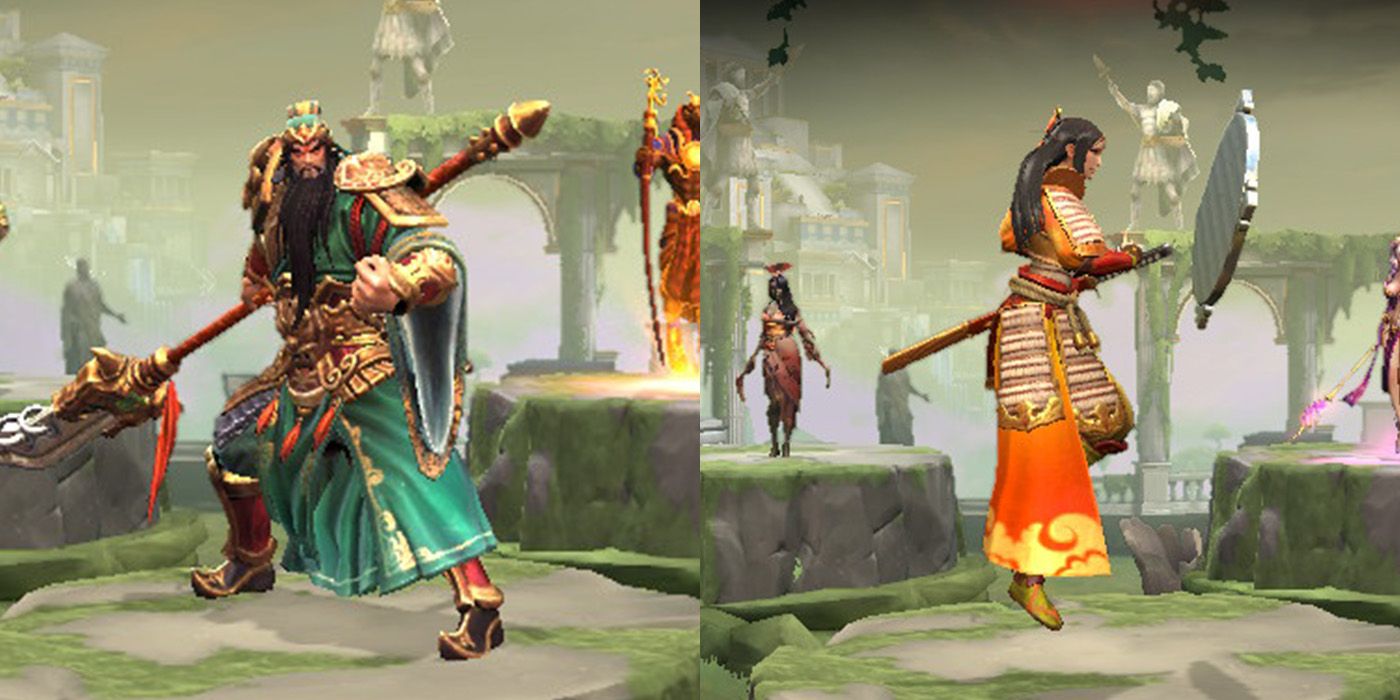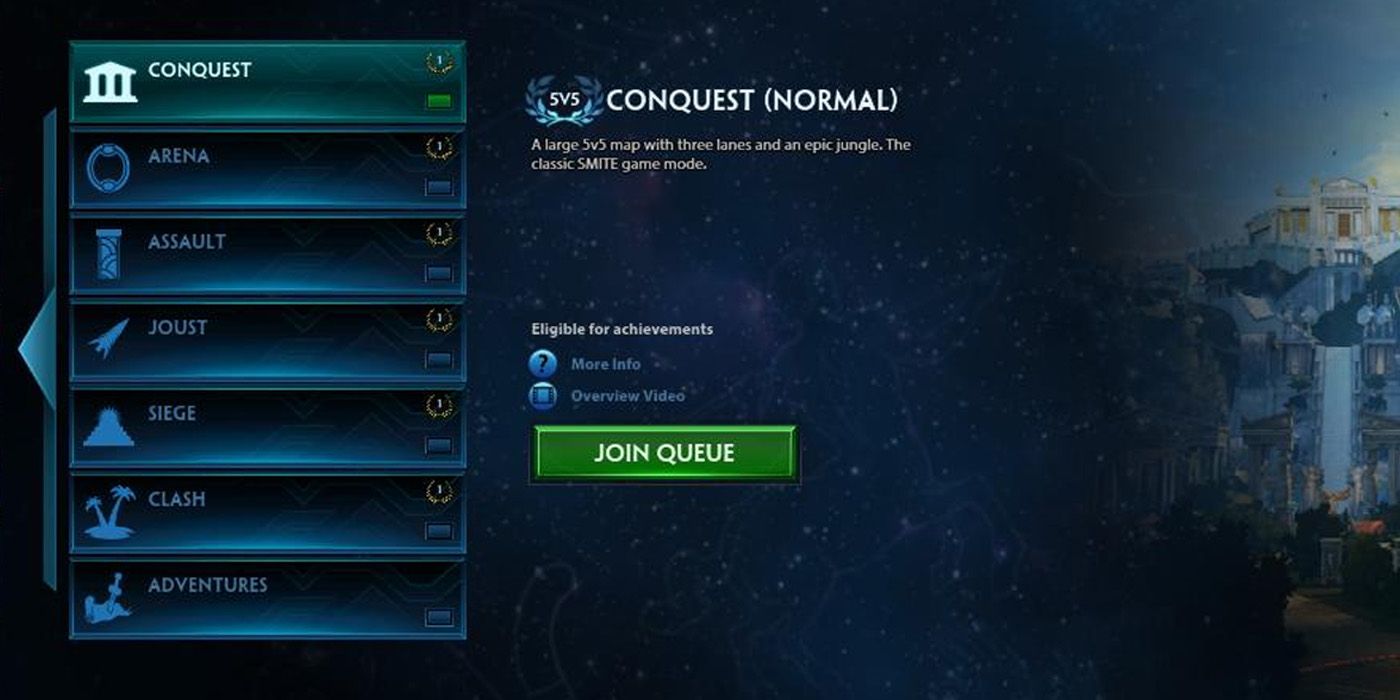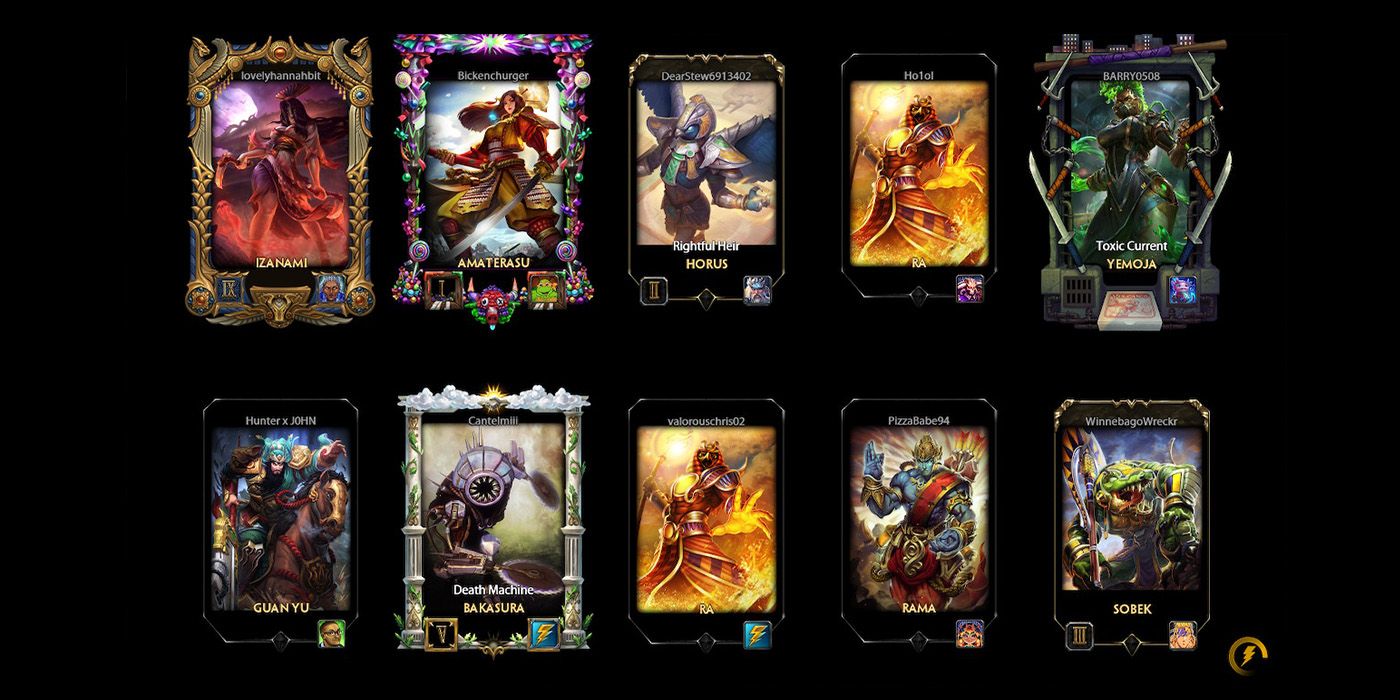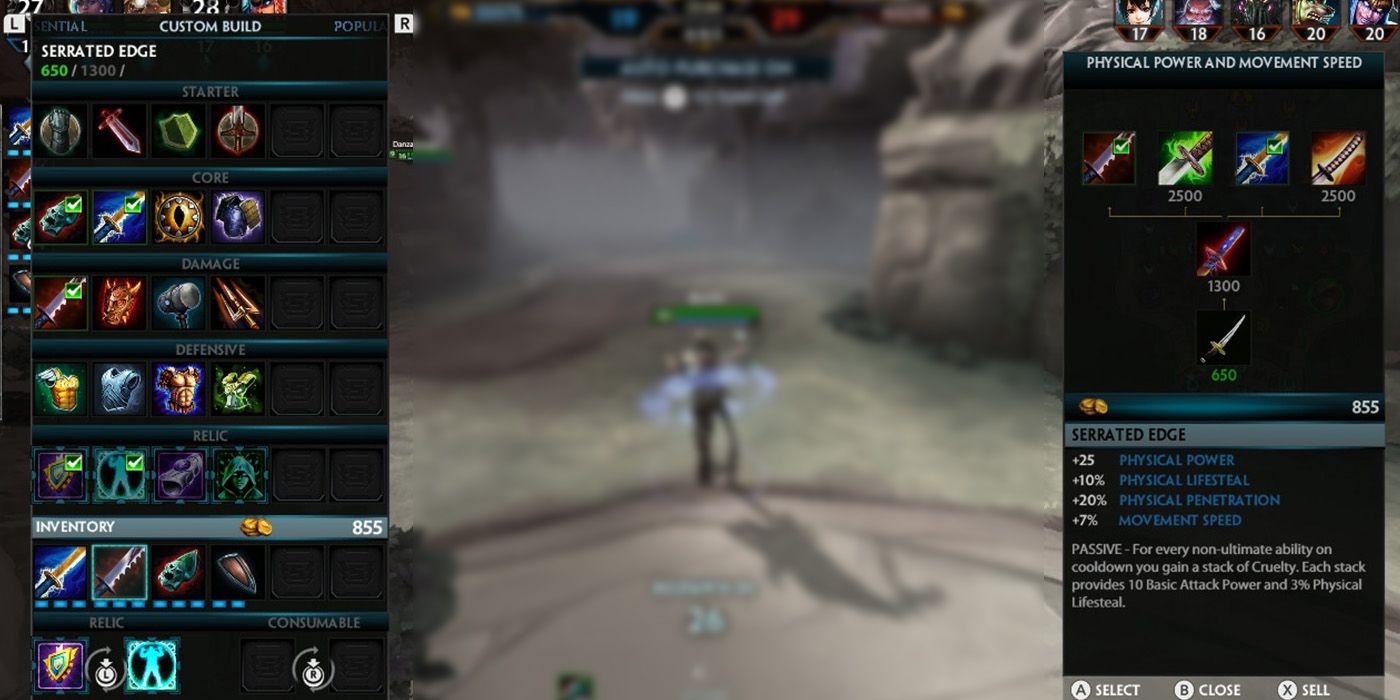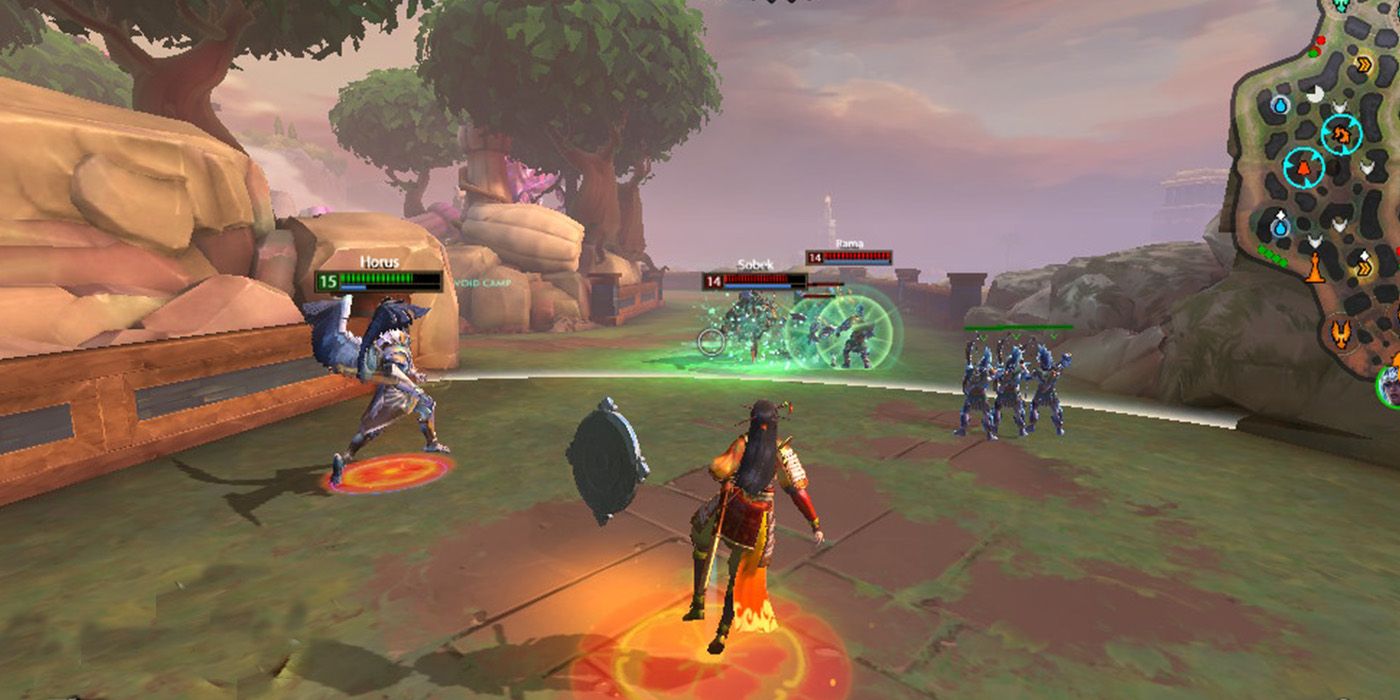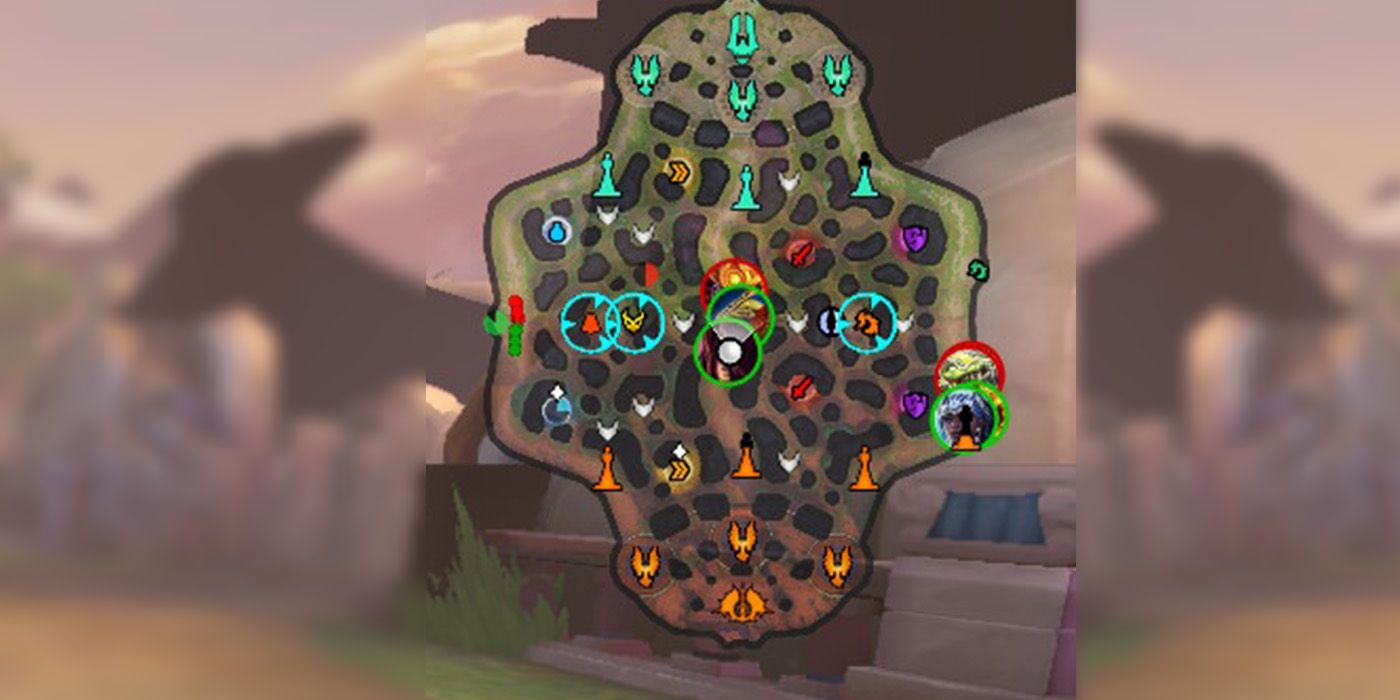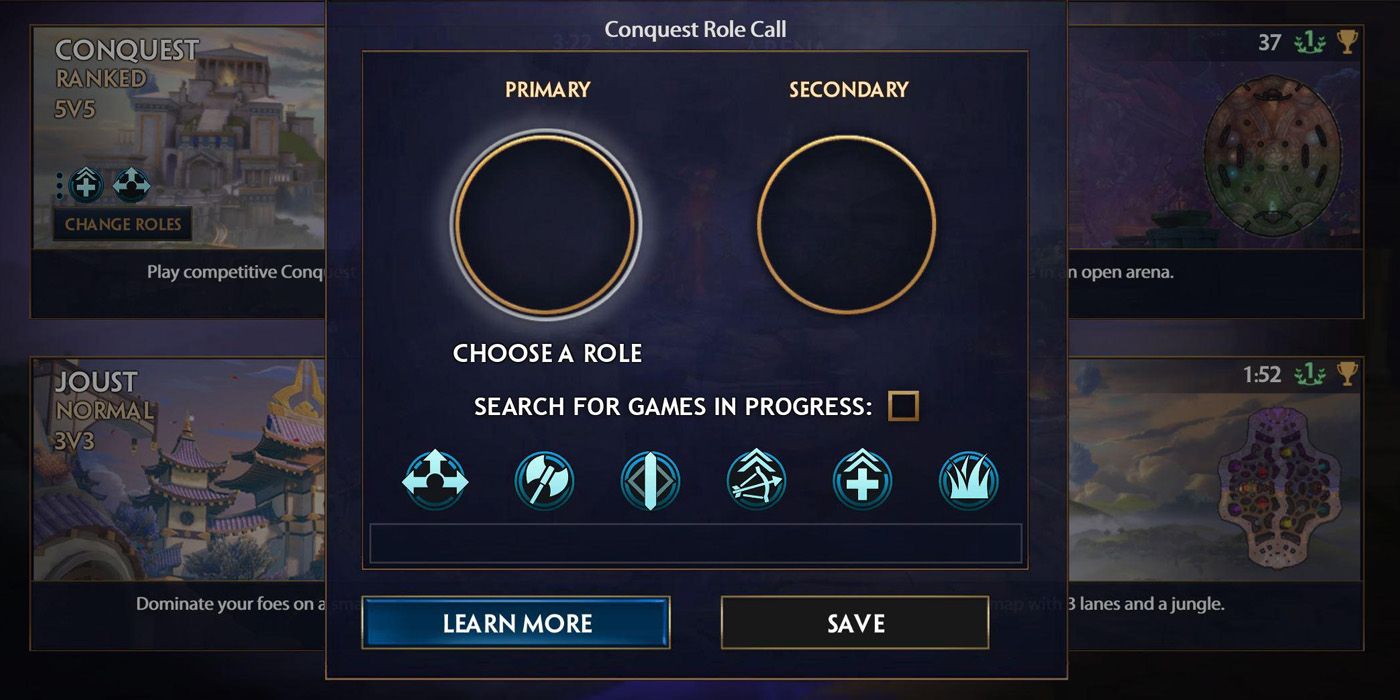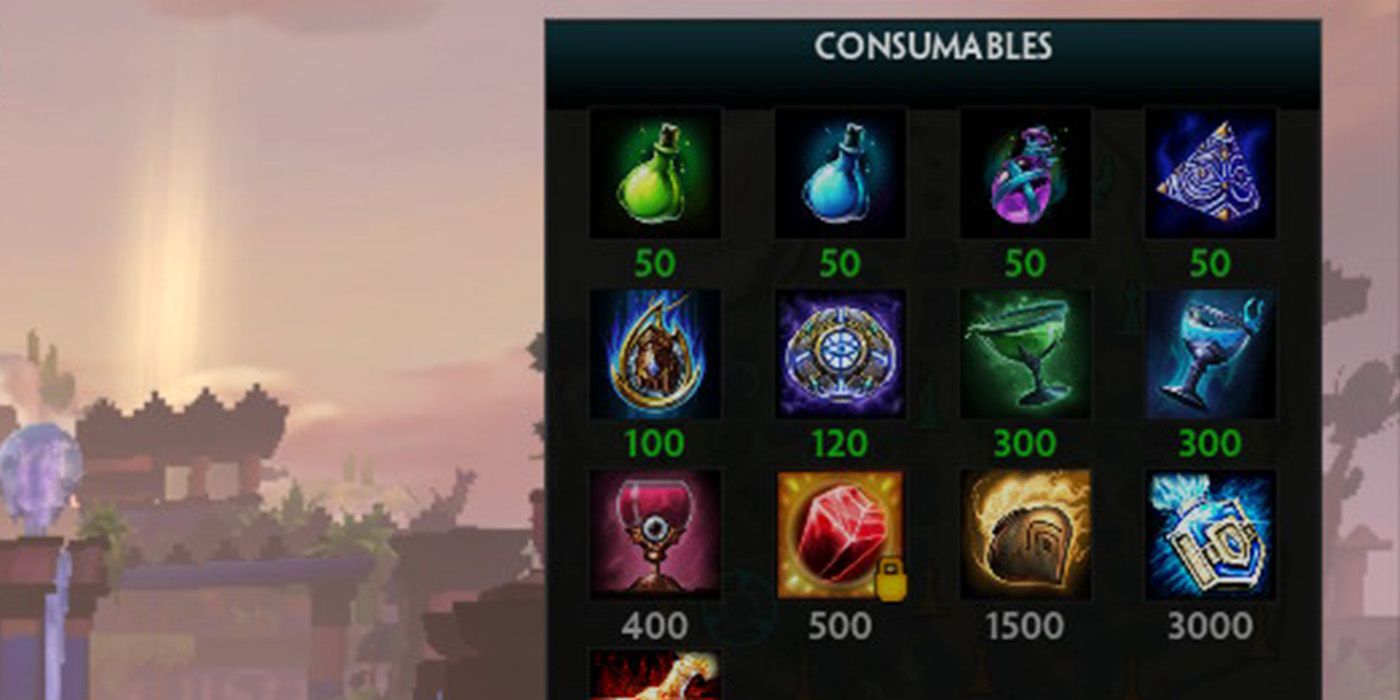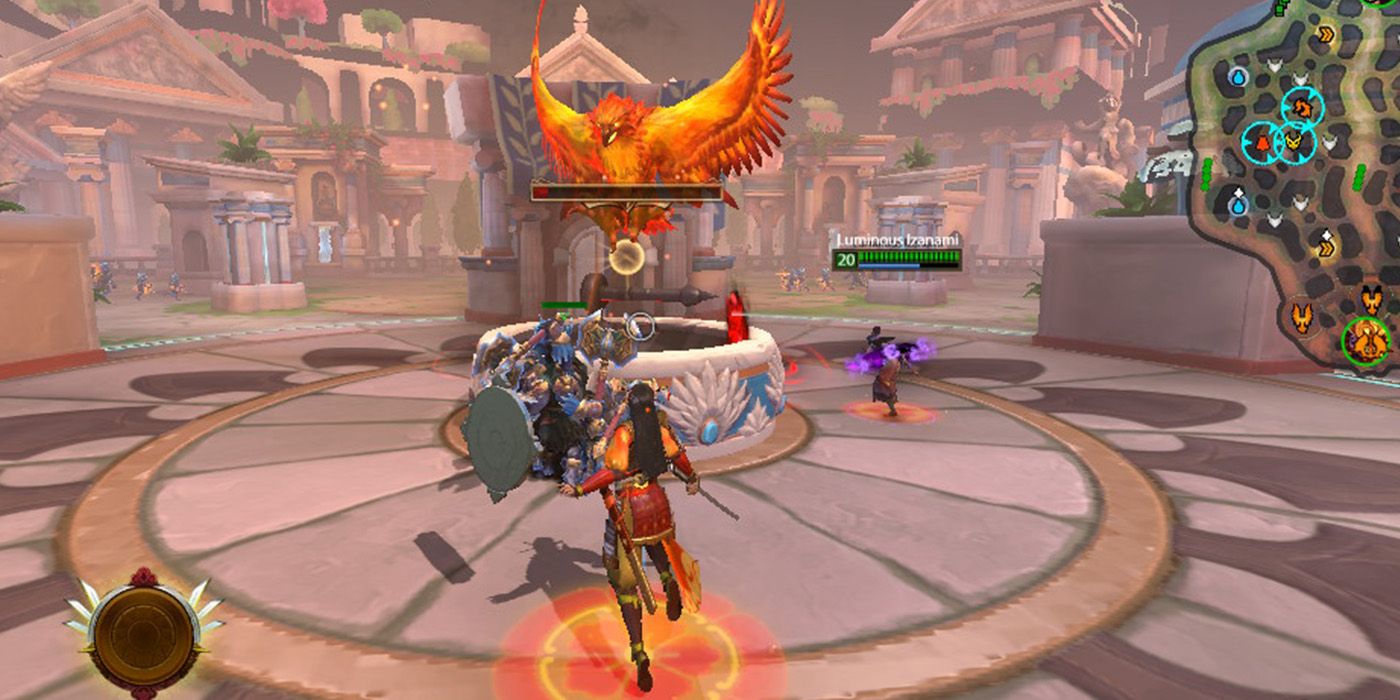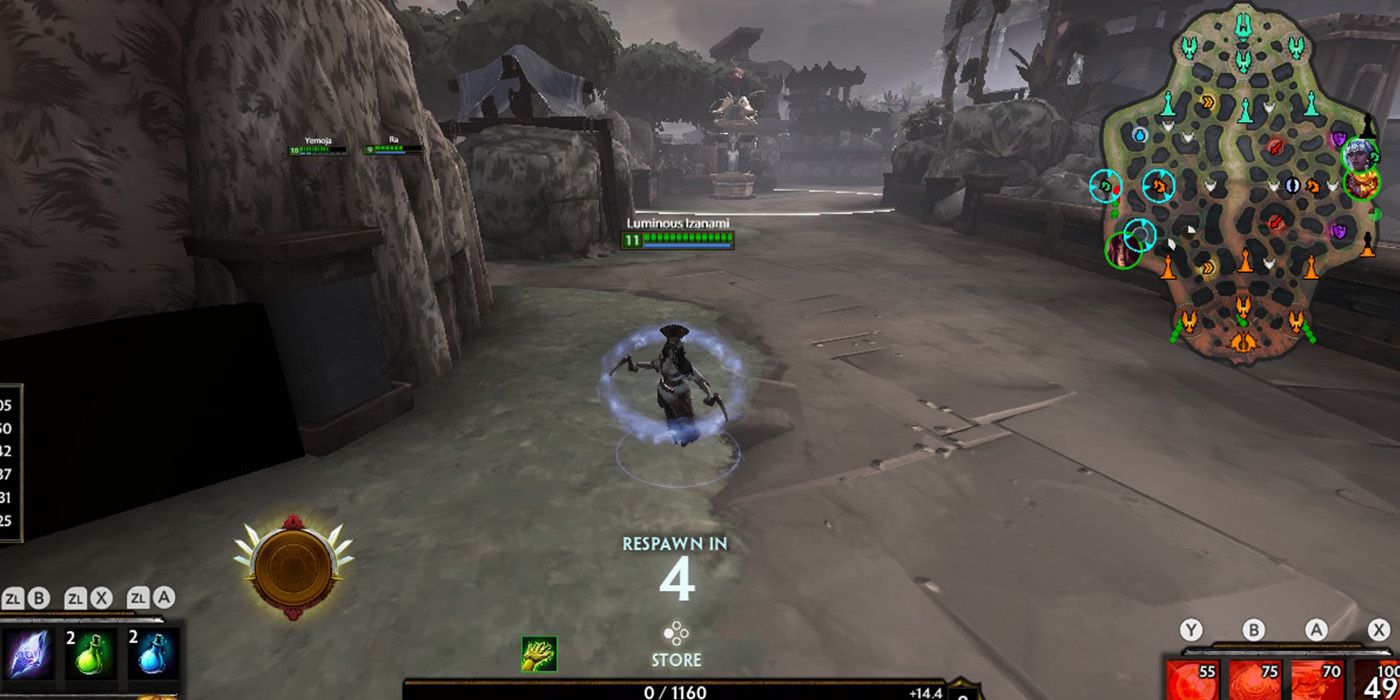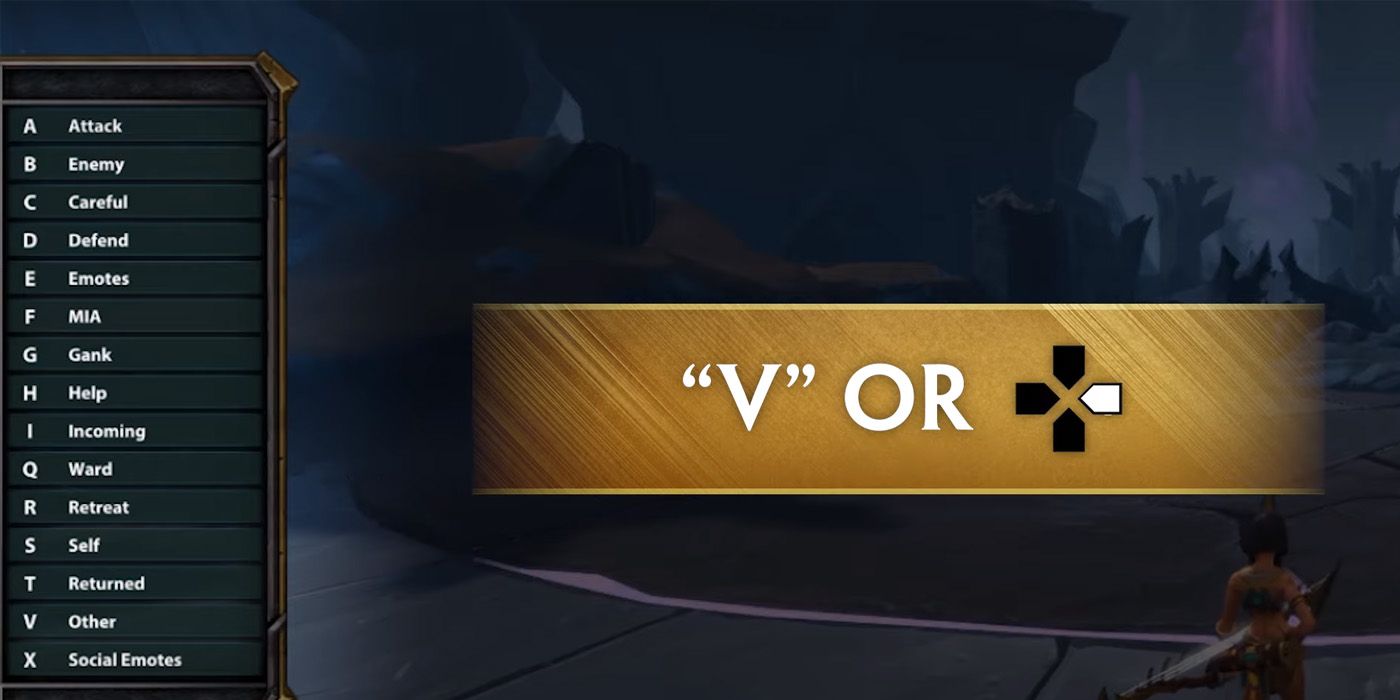Players looking for a unique MOBA experience will enjoy the more up close and personal experience of Smite from Hi-Rez Studios. After all, their free MOBA not only lets players assume control of gods and mythical beings from various pantheons. Rather, Smite gives players a fighting game twist to the MOBA experience. In turn, players can not only play as Zeus, but point his thunderbolt to whatever place they want.
However, both MOBA newcomers and veterans might feel overwhelmed the first time they play Smite. After all, it's not every day that a MOBA enables players to assume direct control of their heroes. Moreover, what common mistakes do new Smite players usually commit, and how should they avoid them?
Trial By Fire
Like any other MOBA, Smite throws players in a neat tutorial while controlling the Hunter Neith. Thankfully, her easy-access kit gives newcomers a wild ride with her vicious attack speed and straightforward moveset. Afterward, the game proceeds to let players get into the Arena, allowing them to test another God immediately in this 5v5 team deathmatch.
After a few rounds in Arena, players might feel confident to try any of the other game modes. However, the sheer complexity of some of the game modes might easily discourage players. Unfortunately, that's probably one of the worst mistakes any player could make.
10 Don't Neglect Other Game Modes
As a MOBA, Smite has a wide variety of game modes that accommodate different game types. Thankfully, all these game modes utilize the same gameplay mechanics. In turn, players can take their mains and duke it out with other players in various scenarios. However, the worst thing players could do is to neglect the other game modes entirely.
Granted, certain game modes might not be a player's "thing." However, these matches still help players hone mastery over a God's kit across various scenarios. Here are Smite's various game modes:
Unique Mechanics
Match of the Day: These are daily special modes that give players unique win conditions. More than 20 MOTD setups exist, all of which have different mechanics, caveats, and usable Gods.
Arena: The Arena serves as Smite's iteration of a 5-versus-5 team deathmatch in the eponymous Arena. As a game mode, the main mechanic rests on reducing the enemy's number of Tickets to zero. A team can do this by eliminating enemy heroes and escorting their troops to a Portal on the enemy's territory. Interestingly, players can use Arena as a basic training ground to get used to a new God's kit. Moreover, Arena becomes a handy access point to test out team fight builds.
Domination: The Domination mode serves as Smite's version of Capture the Flag. Essentially, a team needs to lower the enemy's tickets by controlling Sand Guardians in three key areas. This game mode serves as a good way to learn how to prioritize objectives and have quicker thinking in a match.
MOBA-Like Mechanics
Conquest: The Conquest mode serves as Smite's standard 5-veruss-5 battle across three lanes. Unfortunately, a lot of newcomers do tend to get overwhelmed with this setup. However, of all game modes, players should never neglect Conquest as this is the main drive of playing Smite.
Assault: The Assault mode is Smite's iteration of the All-Random, All-Mid setup. As the name implies, the map has all the elements of a single lane. These include the main Titan, one Phoenix, and two Towers. However, all partiicpating players get assigned a God at Random. Newbies might find this mode a bit difficult. However, Assault works for players who want to try out new Gods but don't know which ones to test first.
Clash: Serving as a hybrid of Arena and Conquest, Clash has a more straightforward approach to lane-pushing and team fights. This mode has two lanes, with one Phoenix and one Tower each. It also has a smaller jungle area in between. Players should go for Clash if they want to try out new Gods in a fast-paced setup prior to Conquest.
Joust: Unlike the two-lane Clash, Joust has much more simpler mechanics. Essentially, Joust takes place on a single lane, with a couple of Towers and a Phoenix that guards a team's Titan. Due to the smaller playable area, Joust has teams of three instead of teams of five in the match.
Gods Rise And Fall
Unlike other MOBAs, Smite lets players take control of Gods across various pantheons. Interestingly, the game itself has in-depth lore as to how these pantheons came into contact with one another. However, in terms of the game itself, this factoid means players have a wide range of Gods to choose for their battles.
9 Don't Stick To One God
Given the 100+ Gods in the game's full roster, one can't blame a newcomer to "stick with a main." Unfortunately, a player's main might work best on specific situations - and worse on others. Instead of players forcing themselves to just use one God, it might be best to diversify one's playstyle.
The easiest way to become a more dynamic player is by expanding one's arsenal of go-to Gods. For newcomers, this means usually getting familiar with at least one God for every Class:
Warriors: Heavy-hitters such as Amaterasu, Guan Yu, Horus, and King Arthur rely on their sheer Physical Power to boost the potency of their atacks. Interestingly, their overall damage and damage mitigation abilities put them squarely in the middle of Guardians and Hunters. In turn, they make great starting Gods thanks to this balance.
Hunters: Ranged combat and damage specialists such as Neith, Skadi, and Artemis fall under the Hunter Class. They maximize their Physical Power to boost their overall damage, making them perfect against Jungle monsters and, in the endgame, their fellow Gods.
Guardians: Protectors such as Ares, Cabrakan, and Ymir compensate for their low damage output with their amazing survivability. As Guardians, they specialize in using Magical Power to increase damage mitigation and crowd control potential.
Mages: Spellcasters such as Ra, Hera, Nu Wa, and Olorun tap into their Magical Power to increase the potency of their magical abilities. Despite their low health, they tend to dish out devastating area-of-effect spells. In turn, they excel in fighting enemies from any direction.
Assassins: Speedsters such as Da Ji, Nemesis, Thor, and Tsukuyomi use their sheer speed and Physical Power to catch enemies off-guard. They deal massive burst damage - perfect for ambushes, fly-bys, and opportunity attacks.
8 Don't Blindly Follow The Meta
Another mistake players often make is to stick too much to the current meta. In layman's terms, this means researching the best Gods to use in a particular Season, and which builds work best with them. Granted, following the meta does give players a considerable edge in any match. However, blindly following them won't help players learn exactly how these metas work. In turn, players should probably adopt an alternative way of looking at the meta in the game:
Check how updates affected which Gods: One of the best ways to understand the current meta is to check how updates affected certain Gods. Sometimes, Gods with rather absurdly-powerful builds get nerfed. Meanwhile, Gods who had a disadvantage will likewise receive buffs. The most famous (or infamous) Gods often get affected by these updates, so players need to be aware of these updates.
Check how unpopular Gods adjust to the Meta: Interestingly, players might want to check out how non-Meta Gods interact with the Meta deities. Using this method, players can find potential counters of Meta Gods within the non-Meta Gods that don't always get updates.
Check how to counter existing Meta: Moreover, thanks to the existence of various guide websites, Gods almost always have multiple approaches to combat. Some players create meta builds that help one God function the best in a particular Lane or Role. With these in mind, players can start checking guides for builds of Gods with abilities that counter the other God's, or work best against a particular Lane or Role. This way, players can become both proactive and reactive in their God choices and combat approaches.
Eyes On The Prize
In Smite, planning wins half the battle. Outside choosing the right Gods and the right builds, players also need to stay aware of how matches work from a top-down perspective. In turn, players have an edge if they have a basic grasp of what's happening before they happen. Thankfully, players can easily do this by sheer familiarity with their Lanes and the Mini-Map. This part of the tutorial works best with Conquest Mode, the primary game mode in Smite.
7 Don't Neglect Lanes
Conquest tests a team's ability to dominate the opposing squad not just through kills. Rather, a team needs to go all the way to the other side of the map to defeat the enemy's Titan in order to win. To do this, they have to get past two Towers, a raging Phoenix, and various Jungle monsters to slowly dominate the match. At first glance, this seems like standard MOBA fare. However, players who want to "git gud" in Smite need intimate familiarity with its Lanes.
Middle Lane
Mid Lane: Arguably the most straightforward of all the Lanes, Mid Lane is the road that leads striaght in the middle of Jungle and faces the enemy camp. Unlike other Lanes, the Mid Lane has a Tower and Phoenix in close proximity. Moreover, the midpoint of the Mid Lane has four corners, each leading inside the Jungle. In turn, Mid Lane almost always becomes the site for most team fights. Likewise, Gods in Mid also have easy access to other Lanes, encouraging them to sometimes rotate positions to ensure everyone gets adequate support.
Jungle: As with other MOBAs, Jungle serves as the main area for monsters. Thankfully, Smite does a handy job indicating which monster gives each buff with sign posts. Ideally, Junglers should clear all buffs towards their Jungle half's right side, cross Mid Lane, and then get buffs on the left side. Due to this pattern, Junglers often gank Gods in the other Lanes. Since other Lanes rely on the closer Jungle buffs to them, teams often need to coordinate which God gets which buff at any particular time.
Side Lanes
Solo Lane: In Smite, there aren't any Top or Bottom Lanes. Rather, the Solo Lane serves as the side with the Blue Buffs and the Fire Giant. In this Lane, Soloists (mostly Warriors) meet in little skirmishes to deter each other's assault. Due to the lack of immediate Buffs in this Lane, Solo is often not the site of team battles.
Duo Lane: Opposite Solo Lane is the Duo Lane with the Purple Buffs. Despite being similar in nature to Solo Lane, Duo Lane is closest to the Gold Fury. In turn, the ADC and Support Gods in this Lane often contest over these resource buffs. Due to the volatile nature of this Lane and its resources, this becomes another contested site.
6 Don't Neglect The Mini-Map
With the Lanes in mind, it's recommended for Smite players to always look at the Mini-Map every five seconds to stay wary of everyone's movements. Thankfully, players can utilize the Mini-Map to maximize their efficiency in combat. Essentially, players need to watch out for these cues:
Missing Counter-Role: Players almost always meet an enemy of the same role in their Lane. Like a dance, a player and their counter-role usually poke each other to avoid the other party from advancing. If a player's counter-role becomes missing, either they're farming in the Jungle or trying to get to Mid.
Ongoing Teamfight: Players who encounter a teamfight anywhere should get wary of any neglected Lanes. Instead of immediately participating in the teamfight, players can take advantage of any neglected Lanes for any chances of destroying an enemy Tower or Phoenix, or even securing a Gold Fury. Guardians and tanks should prioritize defense to ensure that none of their Lanes remain vulnerable during teamfights.
Enemy Pushing: Likewise, players who notice their counter-role pushing more than usual can choose to neglect meeting them in a dance and instead punish another Lane. Players with higher-level gear or a better understanding of their role can do this. They can use this time to give an enemy a quick gank, or scare their counter-role into retreating to "help" out.
Choose Thy Battles
Players with an intimate understanding of their Gods and the Conquest Map can start utilizing their newfound knowledge in actually partaking in match. Interestingly, a player can have a straightforward approach to Conquest Mode provided they're aware of their intended Role and how they should perform in battle. Here are some quick tips:
5 Don't Forget Roles
Aside from Classes, a God can become tailored to fit a certain Role in Conquest. Thanks to this classification, Gods with the right build can perform certain tasks that can help contribute to the party's overall victory. Here are Conquest Roles and things expected from them:
Solo: Solos or Solo Laners usually fall within the melee-reliant Warrior Class. These Gods specialize in soaking enough damage to deter enemies from reaching their team's structures while dealing enough to stay a threat. By the time a Solo destroys the enemy Tower, it's recommended they rotate and assist other Lanes like the Support.
Carry: ADC (Attack Damage Carry) usually fall within the ranged Hunter Class. Essentially, Carries act like the Solo in their Duo Lane, deterring enemy approach from a ranged standpoint while leaving every now and then to get fed. Interestingly, Carries can have some of the highest damage output in the late game. In turn, Carries pay particular attention to hindering the progress of their enemy ADC to avoid a disadvantage in the long run.
Support: Paired with the Carry is the Support, usually in the form of tanky Guardians. As a roaming Role, the Support almost always secures the Mid Lane but protects the Carry as much as possible. They don't steal essential Jungle farms and buffs as they focus more on protecting the team than securing kills.
Mid: In speaking of Mid Lane, Mages with their high AOE damage often take Mid Lane. Due to their position, Mages can defend the team's middle structures from opposing Junglers and other roamers. Despite their low health, their close proximity to Towers and the Phoenix give them easier opportunities to escape.
Jungler: As with other MOBAs, the Jungler usually strengthens themselves by taking on Jungle buffs and farms. Fit for the Assassin Class, the Jungler builds themselves up to ambush enemies in ganks or even aid other Lanes that need support. Unlike the late-game specialist Carries, the Junglers can easily dominate the early game.
4 Don't Forget Consumables, Cooldowns
Aside from Roles and builds, players need to become wary of Consumables and Cooldowns in their inventory. Despite their cooldown-based or limited numbers, a Consumable and Cooldown can easily turn the tide of battle when used at the right moment. Here are certain item types to consider:
Potions: As with other MOBA titles, Smite has Consumables in the form of Potions. These come in basic Health and Mana Potions, as well as more specialized items such as Elixirs that increase certain attributes for short bursts of time. Most early game builds rely on Potions to help Gods outlast short skirmishes. Meanwhile, more specialized Elixirs can give Gods a much-needed boost in firepower to outlast enemies in teamfights, especially in key moments.
Relics: A crucial part in Builds rests in the kind of Relics used. These items serve as upgradeable "power-ups" that follow a Cooldown system. When used, these Relics can give the God and/or their allies a short boost in attributes, partial immunity, or even a healing effect for a few seconds. However, Relics in most builds can make or break teamfights and matches, especially when paired with the right God and the right ability.
Wards: Despite their appearance, Wards can become a crucial aspect of any match. While destructible, Wards can help a team identify crucial enemy movements inside hard-to-reach areas of the map like Jungle areas near the enemy. A well-placed Ward can help teams identify incoming initiates, or enemies moving towards certain objectives.
3 Don't Ignore The Flow
Aside from an understanding of Roles and Lanes, players also need to stay sharp - especially in terms of the match's overall flow. A Conquest Match can be as short as 15-minutes to as long as an entire hour. In turn, teams won't always encounter swift victories and may even sometimes make an epic comeback from a massive disadvantage. As such, players need to stay sharp in certain parts of the match. Here are some quick references:
Early Game (~10 minutes): In the Early Game of a match, both teams focus on building their strengths while deterring any approach from the enemies as much as possible. Along this timespan, Gods are expected to carry Potions, build a pair of Boots, and slowly build one or two core items. The earlier Gods manage to finish these objectives, the easier a team can cope up with the earlier teamfights and ganking that can occur in this stage.
Mid Game (15 to 20 minutes): Around this time, most Gods should have arrived around the middling points of their builds. In turn, Assassins/Jungles can start paying attention to disrupting the progress of enemy Warriors/Solos, or even ADC-Support/Duos. Meanwhile, Mages/Support should be on the lookout for early teamfights in Mid, as Towers here become very prone to destruction. It's at this stage that the wrong retreat can give a Tower to the enemy.
Late Game (20+ minutes): If matches don't end around this mark, things turn toward the endgame. In this part of the match, Gods start reaching their maximum levels, allowing them to start capitalizing on the final parts of their builds. Teamfights become more intense here, as a Deicide (eliminating all Gods) can easily give a team a match. Likewise, teams running behind can make a comeback if they last this long, as other Gods are specifically more powerful by the time they reach the Late Game.
Always Room For Improvement
As a competitive MOBA, Smite players always find themselves on a constant ranking ladder. On the high end, the world's best players continue to outwit each other with the best meta builds and surprising comebacks. Meanwhile, those on the competitive scene strive to make a name for themselves in their areas. As such, newcomers might feel overwhelmed even attempting to "go pro" when the competition is easily fierce. However, as the adage goes, people can only make omelettes by breaking a few eggs.
2 Don't Forget About Tactical Losses
As newcomers to a competitive MOBA like Smite, players should accept that losses will easily become a part of everyday life. However, players poised to go pro should realize that even losses have their own advantages. Moreover, a loss doesn't immediately indicate inexperience. Sometimes, the best players use losses as a way of learning how to participate better in matches.
After all, losing the battle doesn't mean losing the war. Here are certain things players should do to make way for acceptable - even tactical - losses:
Testing Progression, Rotation: Battles serve as the best way not just to test a God, but particularly their progression. Since Gods can reach up to Level 20, players can test out any number of level progression to find the best set of leveled abilities at any point during the game. Moreover, doing this allows players to test proper rotation, especially regarding timing.
Testing Laning, Teamfight Rotation: Aside from skill rotation, players can also use battles as a way to test effective laning and lane rotations. After all, while Gods have recommended Roles and Lanes, battles sometimes necessitate having to move around. These matches serve as the best way for players to know the right timing as to how long to stick to do laning and when in their build is the best time to engage in teamfights.
Testing New Relics, Builds: Unfortunately, descriptions in items don't do enough when it comes to declaring their viability in a build. In turn, battles remain the best option to test new builds - especially deviations from the meta. These include not just trying out Relics and other items. Rather, it's testing the viability of their effects against particular skills, combos, and situations.
1 Don't Forget To Communicate
In a fast-paced game like Smite, it's not exactly easy for players to communicate. Moreover, given how players have a more direct control over their Gods, heading to chat can waste valuable time players can instead use to rush to an objective. As such, why even communicate in the first place? Interestingly, it's precisely because of Smite's fast-paced nature that communication becomes necessary.
Thankfully, Smite makes it easy to communicate as well. Its easy voice-based commands allow players to pick straightforward cues to send to their teams should they need it. However, communication allows players to stay on top of the game and foster trust in between teams. Here are things new players need to stay on top of:
Preparation, Anticipation
Self: Players also have their own set of self-related commands, allowing them to quickly indicate any positions or targets they aim to prioritize.
Enemy, Missing: Players can also use chat to indicate anything happening related to the enemy. These include giving out enemy positions, especially if they're attacking a structure or a monster. Moreover, voice commands also exist to indicate spotted enemies, or if they're about to use/have used their Ultimate. These also include if enemies are missing on particular lanes, or if enemies are incoming.
Careful, Ward: Players can utilize chat to give quick cues on being careful, especially towards certain directions or lanes. Commands also exist for placing Wards on a target lane.
Battle-Related
Attack, Gank: Players can use chat to give quick reminders of anything regarding offense. These include attacking a certain Lane, a certain structure, or even a certain monster. Cues also exist for ganking, helpful for quick skirmishes. This is especially helpful for Jungle specialists who need to pay attention to available buffs for the taking.
Defend, Help, Retreat: Players can also give cues to which lanes other teammates should focus on. These also include defending certain creatures, such as the Gold Fury and the Fire Giant. Cues also exist to ask for help in particular lanes. Commands also exist for retreating, especially if allies are in a pinch.

